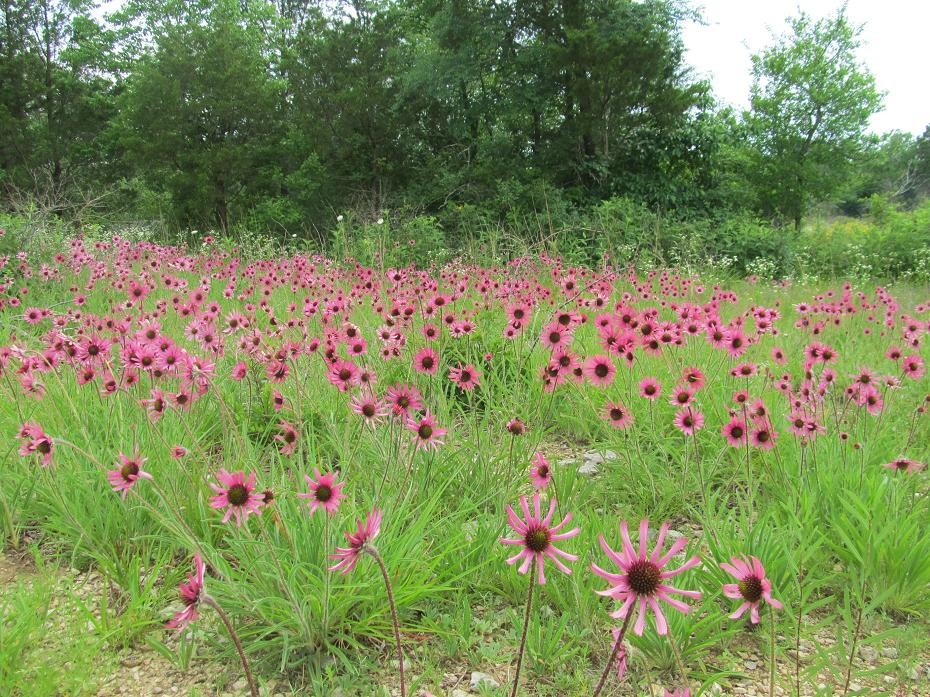by Maria Maring
Land Conservation Coordinator
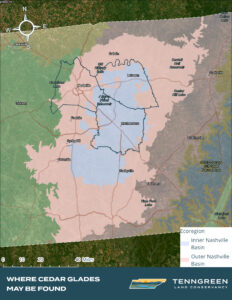
Did you know that there are some plants right here in Middle Tennessee that occur nowhere else on the planet?
Take the Tennessee coneflower (Echinacea tennesseensis), for example. It’s found in Davidson, Rutherford, and Wilson counties, TN—and nowhere else, period. That’s because the ecosystem that supports it only occurs in the Central Basin. This ecosystem is the cedar glade.
Unfortunately, cedar glades and all the unique species they support are in big trouble. They are naturally flat and without trees, which makes glades very vulnerable to development. To make matters worse, dumping, ATV joy riding, and fire suppression have greatly diminished the integrity of what few of these habitats remain.
If not protected and managed correctly, the globally rare cedar glade will disappear right before our eyes. It is therefore our duty as Tennesseans to preserve them now for generations to come.
What is a Cedar Glade?
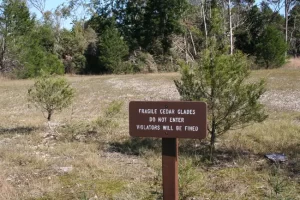
Generally speaking, a glade is a rocky, open area with thin to nonexistent soil. There are many different types of glades throughout the world, and they are classified by the type of rock underfoot (i.e., sandstone glade, shale glade, etc.). In Middle Tennessee, we have limestone glades, but we call them cedar glades thanks to all the eastern red cedar trees (Juniperus virginiana) that grow on the outskirts of these rocky patches.
Cedar glades experience extreme conditions throughout the year. Due to poor drainage and water retention, the surface rock is wet in the winter and dry in the summer. The plants that call cedar glades home are highly specialized to these conditions, which is why some occur nowhere else in the world (making them endemic to the area).
‘There is no tomorrow to conserve the cedar glades of Middle Tennessee.’
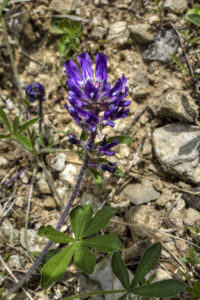
Some species endemic to cedar glades include limestone fameflower, Nashville breadroot, and leafy prairie clover. Limestone fameflower (Phemeranthus calcaricus) is a small succulent with a shockingly bright pink flower, and it is an at-risk species.
Nashville breadroot (Pediomelum subacaule) is in the legume family. It has blue to violet flowers, fuzzy stems, and palmately compound leaves. The breadroot’s tuberous root is edible both raw and cooked, which has earned it the nickname “glade potato.”
The leafy prairie clover (Dalea foliosa) is also in the legume family, and its bloom resembles a corn cob. It has been federally endangered since 1991.
You can find high-quality, intact cedar glades at Cedars of Lebanon State Park, State Forest, and State Natural Area. Located in Wilson County, less than an hour east of Nashville, the park boasts 117 campsites, eight miles of hiking trails, a disc golf course, and more. They often host family-friendly programming at the Sadie Ford Heritage Farm and Cultural Arts Center, a 1920s-era house and outbuildings. Cedars of Lebanon is especially beautiful in spring, when all the spring ephemeral flowers bloom.
A quick side note about land designation and management: Lands protected by different entities result in different purposes and management techniques. State parks are managed by the Tennessee Department of Environment and Conservation (TDEC) with the goal of recreation; state forests are managed by the Department of Agriculture with the goal of producing wood product; and state natural areas have the utmost protection priority, and they are managed by TDEC’s Division of Natural Areas.
Challenges Facing Cedar Glades
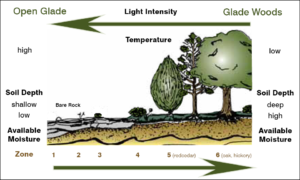
Aside from human activity like widespread development and illegal dumping, a significant challenge facing cedar glades is a natural process called succession, which occurs in the absence of natural disturbance events and/or deliberate management. In this instance, the glade will completely convert into a forest ecosystem over time. So, not only is the protection of cedar glades integral but proper management is, too.
For example, fires—spurred by lightning and Indigenous communities—have long been an essential and natural actor in Tennessean landscapes. In forests, periodic fire reduces the accumulation of duff, or decaying organic matter—keeping forests healthy, improving wildlife browse and forage, and maintaining high floral diversity. But especially in glades, fire is critical in preventing succession and maintaining the health of cedar glades.
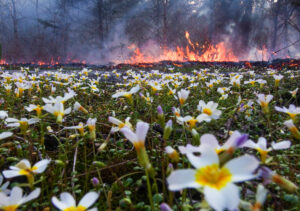
TDEC utilizes prescribed fire as a land management tool. When conditions are right, the Division of Natural Areas responsibly burns different areas of a given site on a two- to five-year rotation. This strategy allows the site to have multiple simultaneous stages of succession, thereby maximizing biodiversity.
History of Lebanon
The name “Cedars of Lebanon” comes from the European colonizers who settled on this landscape. The abounding eastern red cedar trees in the area reminded colonizers of the biblical descriptions of Mount Lebanon’s magnificent cedar trees. Before colonization, these lands were the territory of the Creek, Shawnee, Yuchi, and Cherokee Nations.
Since settlement, the area has been populated and farmed. Eventually, the forest was so overharvested and the soil so damaged, subsistence farmers struggled. So, in 1935, the federal government acquired thousands of acres under the Resettlement Administration—a New Deal agency that relocated struggling farmers and homesteaders to better living situations. Twenty years later, some of this land was designated as state park and state forest lands.
Cedar glades are so special, they even have national recognition and protection. The National Areas Preservation Act of 1971 designated it a Class II State Natural Area. Class II lands have “phenomena which are unique in natural or scientific value and are worthy of perpetual preservation.” In 1973, the National Park Service further declared Cedars of Lebanon one of Tennessee’s 13 National Natural Landmarks.
Conservation Success Story
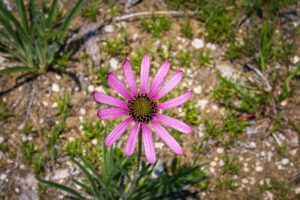
The Tennessee coneflower was first documented in La Vergne in 1879. A mere 82 years after its initial documentation, it was thought to be extinct. That is, until Vanderbilt University Professor of Biology Dr. Elsie Quarterman rediscovered it in 1968. The beautiful purple flower was officially protected by the Endangered Species Act in 1979. In fact, it was the first plant endemic to Tennessee to receive such protections. Dr. Quarterman was resolute, and she worked tirelessly to conserve the Tennessee coneflower by protecting its homelands. It was successfully delisted in 2011.
What is TennGreen Doing to Help?
TennGreen’s conservation work is informed by our Strategic Land Conservation Plan (SLCP). This initiative uses a plethora of information to identify parts of Tennessee most in need of protection. Our findings resulted in 4 types of focal areas:
- Lands along rivers and streams
- Large, connected natural areas
- Land for public benefit
- Biodiverse lands under the threat of development
Lebanon and the greater Central Basin area are prime examples of ecologically significant lands in the footprint of imminent development. As a result, there is no tomorrow to conserve the cedar glades of Middle Tennessee.
TennGreen protects land in two primary ways: acquisition and conservation easements. In a nutshell, acquisition is when we purchase land on behalf of the State of Tennessee to establish new or expand existing parks. A conservation easement is a list of rights and restrictions that is forever attached to the deed of privately-held land. You can read more about the nuances of these two mechanisms under the Our Work tab.
We have used both of these tools to protect cedar glades.
In 2021 and 2023, we purchased 5 and 16 acres, respectively, to expand Cedars of Lebanon State Park. The latter was unique, as it benefitted from U.S. Fish & Wildlife Service’s Partners for Fish and Wildlife program funding, making restoration work possible. Using a masticator, the Forest Service cut and mulched cedar trees encroaching on the glade habitat. Without opening up the canopy, the glade would be lost to succession. TennGreen has also helped the State Forest grow by 17 acres.
‘It is our duty as Tennesseans to preserve cedar glades now for all the world to see and enjoy for generations to come.’
On the private lands conservation side, TennGreen holds an easement on a 29-acre property, and we are in the process of finalizing a 206-acre conservation easement. These properties will continue to be inherited, bought, and sold. Certain activities like subdivision and logging, however, will be restricted in perpetuity.
UPDATE (3/12/2024): TennGreen just completed a 206-acre conservation easement in Rutherford County, called “Lamar Cedar Glades and Woodlands”. This project has been in the works for nearly a decade and permanently protects the largest known privately-owned glade habitat in the area. Three species endemic to cedar glades have been found on the property: Limestone fameflower (Phemeranthus calcaricus), Tennessee milkvetch (Astragalus tennesseensis), and glade cleft phlox (Phlox bifida ssp. stellaria). All three of the most critical conservation plans TennGreen uses to guide its work describe the property as high protection priority. In other words, this project is a big one!
Lamar Cedar Glades and Woodlands has been in Jane Griffin’s family for several generations. Over the years, the land has been a homestead, a cattle farm, an equestrian farm, and now a site mostly for hiking and horseback riding. Jane has generously hosted many wildflower hikes for friends and friends of TennGreen, as she’s passionate about sharing her land with others to help people learn about cedar glades.
“In the early 1980’s, we started riding horses on the property that we inherited from our father,” said Jane. “The woodlands were not where we played as children and were pretty much unknown environs to us. When spring arrived with the annual glade wildflower spectacle, I fell in love with the glades. In the early 2000’s, I became passionate about protecting and preserving the property from the development that was occurring two miles away on I-840. When [my friend and TennGreen volunteer] Willi Honegger introduced me to the fantastic folks at TennGreen, I knew that they would be the group that would help me achieve my dream; I am so thankful for their help and support.”
Original Article Cont.:
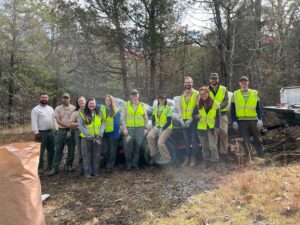
Furthermore, in November 2023, TennGreen partnered with Responsible Stewardship and the Tennessee Department of Agriculture to host a volunteer-led cleanup day. The team picked up over 1,600 pounds of trash!
And there is much more to come. Thanks to a grant from the Community Foundation of Middle Tennessee, we will continue crucial work in the Central Basin. These funds allow more strategic outreach in the Middle Tennessee region, teaching landowners and community members about why conservation in our very own backyards is so important.
Want to learn more about cedar glades? Keep an eye on our social media accounts and Events page to join on future volunteer events and guided hikes. TennGreen’s annual Hike-a-Thon is just around the corner, and we especially hope you’ll join our adventures then! And if you or someone you know owns cedar glade habitat, a conservation easement is the strongest tool to preserve your land forever.
To learn more, please contact our experts at land@tenngreen.org or call (615) 329-4441 ext. 120 today!

